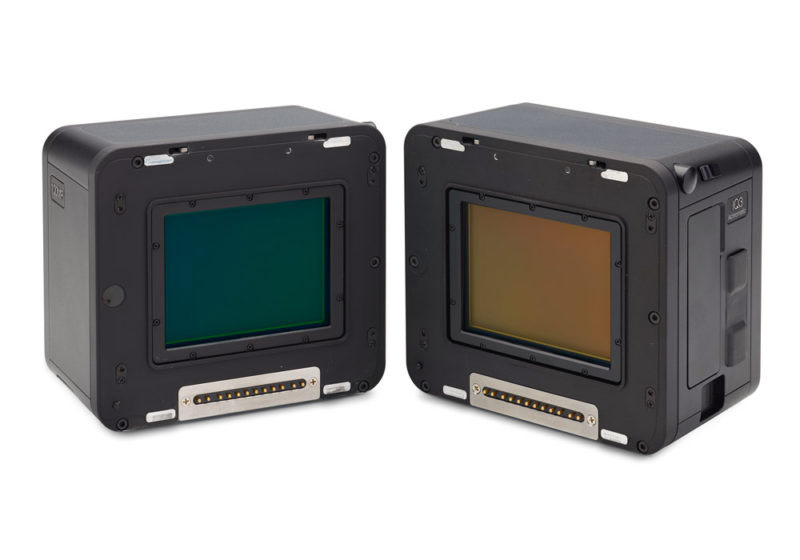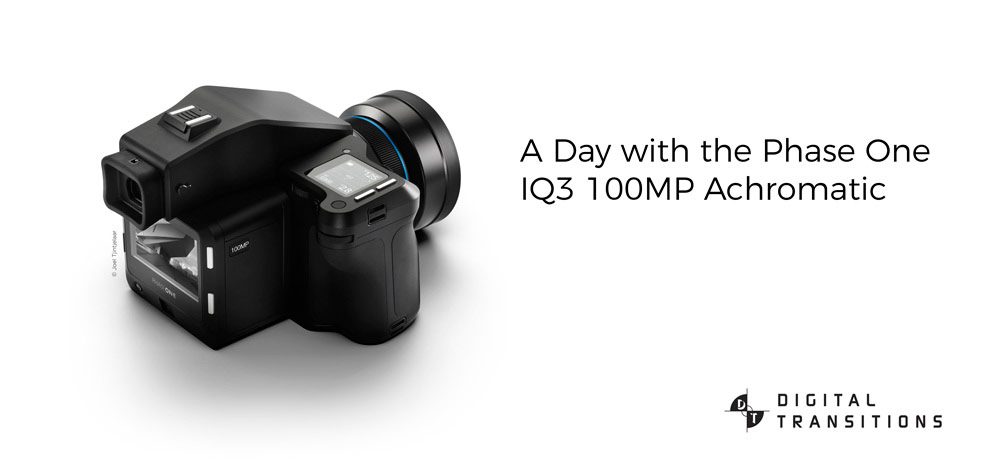Digital Transitions, Gear Testing
A Day with the Phase One 100mp Achromatic
Digital Transitions is one of the few Phase One Partners with a demo unit of the new IQ3 100MP Achromatic digital back, and I was fortunate enough to be able to take it out for testing over the weekend. The Achromatic (aka Achro) back features the same sensor as the standard IQ3 100MP back, but removes the Bayer pattern, UV cut, and IR cut layers of the sensor stack, enabling true, native black and white (monochromatic) images.
While the sensor looks different (the chip is solid black, as opposed to the usual blue), the new back operates exactly the same as the color IQ3 100MP, and interfaces seamlessly with the Phase One XF body and technical cameras, such as an Arca-Swiss. It’s also important to note that unlike the IQ2 60MP Achromatic, the new IQ3 100MP ACHROMATIC HAS LIVE VIEW, making it infinitely more flexible. (I get excited, ok?)

Standard IQ3 100MP on the left, IQ3 100MP Achromatic on the right.
In my first test, I shot the Achro and Standard color backs back to back (pun intended) on the XF body and an Arca-Swiss RM3Di technical camera on an overcast afternoon in Washington Square Park. In direct A/B comparisons with the same settings, there were definitely noticeable differences between the output of the Achro and Standard back converted to black and white (images shown below). The most obvious difference was the increased contrast and tonality on the Achro.
The images from the Achro were contrasty, but maintained smooth tonal transitions, avoiding the typical “punchy” look of high contrast images. The subtlety of the tonal transitions reminded me of the way that I found medium format color to be smooth and vivid without being saturated, and I have a sneaking suspicion that both of these phenomena are a direct result of the sensor’s massive dynamic range and 16-bit output.
On the left, the Achromatic, on the right, the standard IQ3 100MP. Click for 100%
The images from the Achro were razor sharp, just like the color version, as long as a UV/IR cut filter was used. This is important – without one, IR light will reach the sensor, making images softer and lowering contrast. Luckily, Phase One includes a matching filter for your free lens of choice with each Achro XF kit.
Because the Achromatic back has no color filters and allows in more light to each pixel, the base sensitivity is ISO 200 as opposed to ISO 50 on the color version, yet the ISO noise floor remains the same. This means that theoretically, the high ISO performance of the Achro should perform approximately 2 stops better than the Color back, and boy does the Achro deliver.
I tested the Achro’s high ISO performance by shooting a sequential series of images while ramping up the ISO (and matching exposure between shots by increasing shutter speed accordingly). The results are shown below, from base ISO 200 all the way to ISO 51200. As expected, the images are grainy at high ISO, but the dynamic range is still phenomenal, and details are still remarkably discernable even at ISO 51200.
IQ3 100MP Achromatic ISO Ramp starting at 200 ISO to 51200
Left to right: 200 (Base ISO), 400, 800, 1600, 3200, 6400, 12800, 25600, 51200 (Max ISO). Click for 100%
A few conclusions I reached after a day of shooting:
- The Achro delivers image quality to the same standard (if not better) as the regular Phase One IQ3 100MP.
- There IS a difference between black and white conversion, and true achromatic images.
- The high ISO performance is phenomenal, but even having a base ISO of 200 makes handheld daytime shooting much easier than the standard color IQ3 100MP at 50 ISO.
Ready to learn even more about the IQ3 100MP Achromatic?
Digital Transitions is the only place today to see, demo and rent the IQ3 100MP Achromatic!
Learn more about the 100MP Achromatic on our landing page here.
Leasing and Rental is available.

